Welcome to the Beach Ceylon. Discover The Hidden Beauty of Sri Lankan Coastal Area.

We are Operating our tours to the most beautiful Coasts of Sri Lanka - Eastern, Southern, Western and Northern
- Nilaveli (Discover Natural Beauty of Sri Lanka - Watching Whale & Dolphin )
- Pasikuda (Discover the heaven in Earth)
- Jaffna (Discover Sri Lankan Tamil Culture)
- Unawatuna (Including Wild Tour to Udawalawe National Park - Special for Wild Elephant)
- Hikkaduwa (Fun, Relax and Natural Scene Under-Water)
- Negambo (Leisure, Fun and Relax at nearby Airport)
- Chilaw (Free of Charge One Day Ayurveda Spa Treatments)
and more.
Nilaveli Tour
Pigeon Island, Diving/Snorkeling
What can we see and do in Nilaveli (Eastern Coast of Sri Lanka)
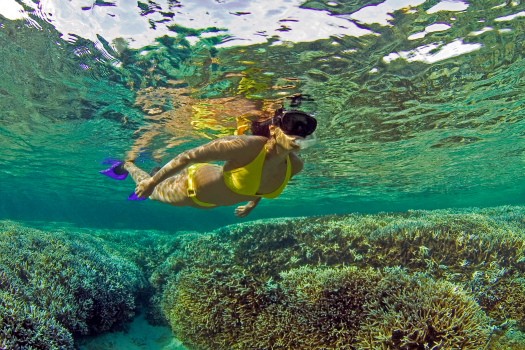
"Trincomalee has one of the world's finest natural harbors and can accommodate the largest vessels - this fact led to Trincomalee being captured in turn by the Portuguese, Dutch, French and British from the 16th to the 19th centuries. Since the 1960s congestion and labor problems at the port of Colombo have forced the use of Trincomalee's port, little used commercially in previous years, for modest export trade. Many evidences of these colonial occupations are found Fort Ostenberg, Dutch gateway dated 1675 at Fort Frederick and Wellington House where the Iron Duke, then Colonel Wellesley, once lodged. Hindu shrine on the 400 ft. crag, Swami Rock; the Hindu Temple of a Thousand Columns, built by early Tamil settlers from S India, was destroyed (1622) by the Portuguese; on its site is Fort Frederick, built (1676) by the Dutch. Because control of Trincomalee was a key to domination over the Coromandel Coast of India, Britain and France sought (18th cent.) to wrest the city from the Dutch; it was captured (1795) by the British. During World War II, Trincomalee was the British naval headquarters in the Pacific theater and had an airfield from which U.S. planes operated against the Japanese in Myanmar and Malaya. A British naval base remained at Trincomalee until 1957, when Sri Lanka abrogated its defense agreement with Britain and took over the base."
Pigeon Island
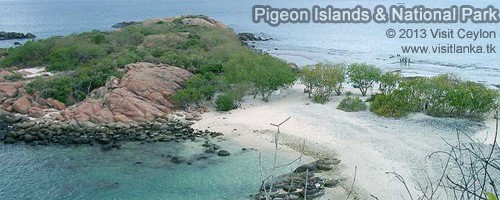
The island is named after its endemic inhabitant the blue rock pigeon that crowd the island in hundreds. The island is also famous for the coral fringe that outlines it; visitors need to engage in a short boat ride to reach the island. Around the pigeon island more than hundred species of reef fish and corals have been identified, making Pigeon island a diver’s paradise. The island was declared a national park in 1963 by the Department of Wildlife Conservation. The island has two small beaches, visitors can find the large coral reef on the beach situated on the south west of the island, and this reef is 200 meters long and 100 meters wide. A visit to the island could incorporate swimming in the sea, snorkelling, diving and sun bathing.
Boat Riding
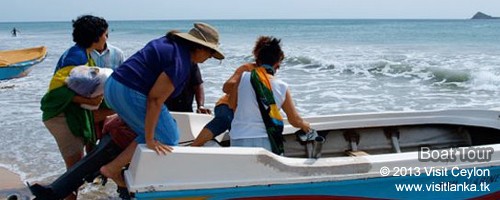
Pigeon Island, a few hundred meters offshore from the Nilaveli beach, is an ideal location for half-day snorkeling excursions. A 10-minute boat ride gets you to this island which was once used by the British Navy for gunnery practice. Pigeon Island.
Nilaveli Beach View
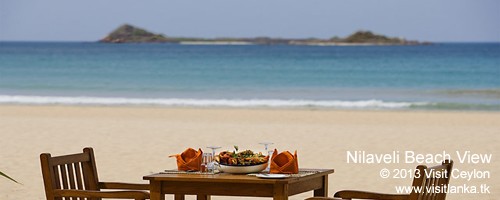
The Nilaveli Beach is located on the East Coast of Sri Lanka, known the world over for its beautiful soft white sand beaches which slope gently into clear shallow seas.
Here you can swim around the multi-hued reef protecting the island like so many layers of ribbon cake – turquoise, ochre, salmon pink, smoky gray, sandstone and cobalt blue – and revel in an underwater world of colorful translucence, feasting your eyes on shoals of jewel-hued fish darting among the surrounding coral and rocks.
Koneshwaram Temple
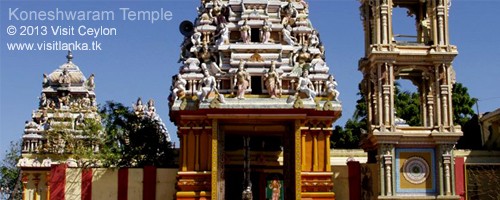
On the summit of the Rock, known as the Swami Rock or the Three Swami Rock, was the "temple of unusual size and splendor, renowned through the whole of India,” the temple which was razed to the ground and despoiled by the Portuguese in 1624. Tirujnana Sambandar the Saivite saint of the 7th century AD features the temple in his devotional hymns. This is the earliest reference to the temple, which in point of time goes back to a far distant epoch.
The Pallavas of South India had considerable influence over the region, in the time specifically of the King of Ceylon, Manavanna (668—703 AD), as we learn from the Sanskrit inscriptions at Tiriyayi, 29 miles north of Trincomalee. From this and other related accounts, it is reasonable to conclude that the Pallava kings bestowed much attention to the temple dedicated to Koneswara and enlarged it considerably. From references to the "Thousand Pillared Mandapam,” it was obviously a shrine of magnificent proportions.
Trinco Habor (Natural Habor)
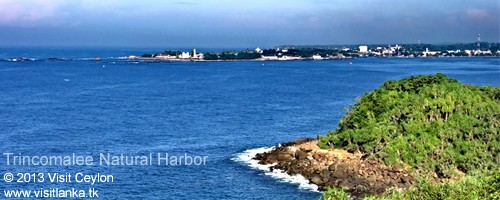
To begin with features sacred, is not to belittle or depreciate the other manifold fascinations of Trincomalee. Nature has endowed the region with a beauty and grace that has not been excelled by man. No doubt, man here has enriched Nature’s gifts, so much so, that Trincomalee today is a product of both aspects harmoniously blended.
Its importance as a place of strategic consequence guided its destinies in modern times. The great European powers vied with one another for the mastery of the harbor. The Portuguese, the Dutch, the French and the English, each held it in turn, and many a sea fight was staged off the cliffs of Trincomalee. Of all harbors in the East, it can be said that it is largely today as Nature endowed it.
Commanding the finest view in all the station, are the terraced high lands overlooking the harbor—the site on the eminence of which stands the most commodious and attractive of the hotels of the place, the Welcombe Hotel. Below stretches in all its splendor the placid waters of the harbor, with but the gentlest of ripples playing over its surface as the soft wind blows over its wide expanse. To all appearance, more a lake set in natural surroundings, than an inlet of the sea, the view of the harbor from the terraced premises of the hotel is a sight most refreshing, physically and mentally. Guarding the entrance to the harbor are the pair of projecting headlines, much as the twin figures of dwarapalas at the entrance to one of the temples of Anuradhapura. It is the temple of Nature that these headlines safeguard. Far away in the distant horizon is a thickly wooded strip of land which "connects the landscape with the quiet of the sky.”
Irregular in outline all around as Nature made it, this enhances the charm of its setting. A carriage road winds along the northern and eastern sections of the harbor.
The situation of Trincomalee in an environment comparatively less developed and sparsely populated, has been a handicap in the past ages, to its advancement. Nevertheless plans to develop Trincomalee as a commercial seaport are under way. These hold forth rich promise of brighter days. Its gifts as a natural harbor may ere long bear fruit, as a commercial port of immense consequence to the economy of Ceylon
The Hot Spring
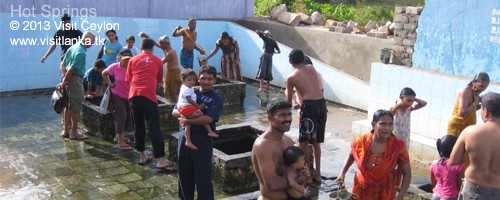
Among the sights of the place are the seven hot springs of Kanniyayi, on the road to Trincomalee. About a mile on a side road branching from the main route, the springs are worth a visit. A high wall assembles all the seven springs in a rectangular enclosure. Each enclosed in a dwarf wall forms a well of its own. The water is mildly hot; the temperature varies but slightly in each. In effect, a public bathing resort, the use of the springs is controlled by the neighboring Mari Amman Kovil who holds the lease of the wells. The site of the springs is crown land.
Nilaveli Beach Tour @ Nilaveli Sea View Hotel

- Luxury A/C Accommodation
- Balcony Sea View
- Luxury A/C Private Transfers/Domestic Flight Transfers/Charter Helicopter Transfers
- Boat Transfers to Pigeon Island and National Park
- Boat Transfers to Scuba Diving, Snorkeling (On Request)
- Meals
- Non-Smoking Eco Friendly Environment
- Sea Bathing
- Sun Bathing
- Water Sports
- Places to Visit - Ancient Fredrict Fortress, Ancient Koneshwaram Temple, Two Naval National Parks, Lovers Leap, Natural Harbor, Marine Museum by SL Navy(On Request).
| Single | Double | |
| 2 Nights/3 Days | 588 US$ | 771 US$ |
| 4 Nights/5 Days | 808 US$ | 1041 US$ |
| Car Transfer | 200 US$ | 200 US$ |
| Domestic Flight Return | 66 US$ | 99 US$ |
| Charter Helicopter | 840 US$ | ( 5 Group or Total) |
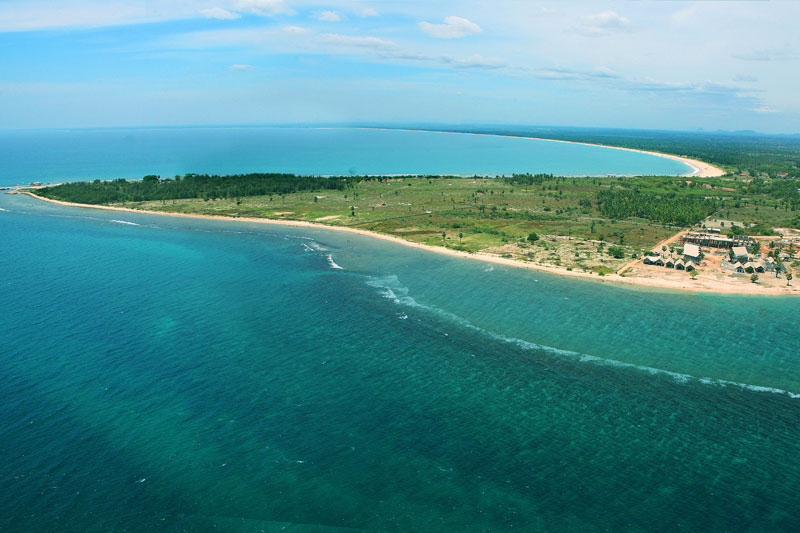
Welcome to Golden Coast of Sri Lanka. Introducing Pasikuda Beach Tour Package for Great Leisure and Pleasure. In This tour is offering, Pasikuda Golden Beach, Arugambay, Kalkuda Beach View and Water Sport, Sun Bathing Sea Bathing Opportunities. Separately, We can offer surfing Packages. Beach Line to Sea over 1 km Feet Over Sea Level offer the live coral watching experience. Boat tours and Water Sports available to spend the leisure time unbelievable memories.
Singing Fishes near Batticalo Bridge
What is the Pasikuda Golden Beach
Single Double 2 Nights / 3 Days 378 US$ 393 US$ 4 Nights / 5 Days 478 US$ 503 US$ Car Transfer 240 US$ 240 US$ Domestic Flight (Only Tuesday) Return 66 US$ 99 US$ Charter Flight/Helicopter 650 US$ ( 5 Group or Total)




